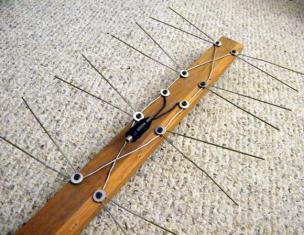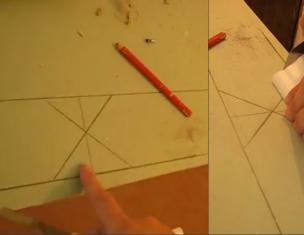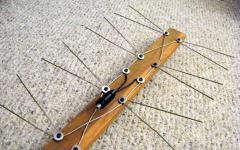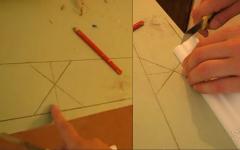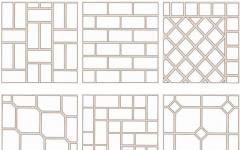When cooking, air in the kitchen requires constant recycling. Couples from the plate, burnt milk, smells of food or just dwarked windows do not bring joy, even if you have done great repairs. Today we will tell you how to set an extract in the kitchen to get rid of these problems. Connect it forces to everyone, if you know the rules for grounding and mounting on the wall. Also worth it in advance, what kind of kitchen hood is suitable for you, and what should be the power of the device. From that and begin.
Installation of drawing in the kitchen will depend on the type of the selected model. Distinguish the following types:
- suspended (also called flat and standard) - are attached under the cabinet over the stove;
- built-in - installed inside the mounted cabinet, so perfectly fit into any design;
- wall mounted - mounted on the wall above the stove, can have a different design of the case;
- corners - installed in the angle;
- island hoods - designed for a kitchen with an island (you can fix it anywhere, hiding to the ceiling).
Tip! Regardless of the type, the installation of kitchen exhaust over the cooking surface is possible only at a height of 70 cm, and 80 cm should be retracted over the gas stove.
Extraction mode
In addition to the type of fastening, the hoods differ in ventilation modes.
- Flowing - pull the contaminated air from the kitchen in the ventilation shaft. This method of ventilation is called air removal (exhaust mode). It is most effective and manufacturing.
- Circulating hoods - paste air through coal filters in the housing, at the outlet getting fresh air. Such a model does not require ventilation in the kitchen in the apartment, so its installation can be called a simpler, but less effective in the cleaning plan.
Necessary power
An important parameter when buying an exhaust is its purification performance, which is measured in cubic meters per hour. As you might guess, this value shows how many cubic meters of air hood will miss through itself per hour of work.
According to the standards established in Russia, the air in the kitchen should be updated 12 times per hour. Therefore, you can easily calculate what power you need for this simple formula:
Kitchen Square * Ceiling Height * 12 times
It is also necessary to take into account the supply of power loss due to the bends of the air duct, the length of the ventilation shaft and other parameters. To do this, add 30% to the resulting result.
For example, if your kitchen has an area of \u200b\u200b6 square meters. m. and the height of the ceiling 2.5 m. The calculation will look like this:
6 * 2.5 * 12 * 1.3 \u003d 234 m3
Tip! Also, when purchasing should be taken into account the issued noise when ventilated enabled, which manufacturers indicate in decibels. Do not buy models that make noise over 50 dB. There are practically silent draws with two fans or one external. In addition, some models are equipped with a sound-absorbing case.
Grounding and zero
Before you tell how to make a hood in the kitchen, it is worth mentioning the electrical safety. Since the inside of the housing falls, the many fat splashes and moisture accumulates, increases the risk of shock when improving the exhaust to the power grid.
Therefore, the hood for the kitchen, installed in your own hands, must be connected to the network in three wires: phase, ground and zero. Grounding wire according to the standard has a yellow color with a green strip. Before installing, ensure ground for the safe use of the electrical appliance.
If the house provides the ground loop and the euro-type sockets are installed, the problems will not appear: when the wire is connected, the wire is connected to the ground terminal, which is indicated by strips of different lengths or the word Ground (GND). If the technique does not provide for a grounding connector, it can be done by itself, screwing the wire to the metal part of the case.  A bomb with a connected grounding in Russia is found only in new apartments
A bomb with a connected grounding in Russia is found only in new apartments
But many may not detect Euro-sockets, and will look at the question: how to connect the hood in the kitchen, if there is no grounding? In this case, the reinforcement can be made with your own hands, but in no case do not connect the zero wire on the pipes and batteries. It is necessary to connect it to a deaf neutral.
To do this, open the electrical panel with the meters and find a closed pipe in the wall there, where the wires come from (be careful, the wires are 220V!), Or a special bus, as shown in the photo. Most likely, you will find a finished pin on it and the zero wires are already thrown. This is a deaf neutral, the pipe is perfectly grounded. It is necessary to spend from it into the kitchen a stranded wire with a cross section of at least 2.5 mm2, and the exhaust is connected through an automatic separator by 6.3a.  Zero tire on the panel in the entrance
Zero tire on the panel in the entrance
Note! If there are already connected wires to the downward, then in no case turn off them! This may threaten the current blow. Take your wire over strangers and tighten the nut. If there are no wires and the pipe is smooth, read it and secure the contact of the wire to the clamp. If you do not understand this case, it is best to turn to a professional electrician.
Ventilation in the apartment
 The scheme of the homemade anti-zero-rooting box with the valve installation of exhaust ventilation in the kitchen almost always violates the staff of the apartment. Often, it is recommended to break through the additional hole for the air removal, but this will not solve all the problems. The fact is that if you increase the window of the ventilation shaft, then its section will remain the same, so the quality of the air exchange will not improve.
The scheme of the homemade anti-zero-rooting box with the valve installation of exhaust ventilation in the kitchen almost always violates the staff of the apartment. Often, it is recommended to break through the additional hole for the air removal, but this will not solve all the problems. The fact is that if you increase the window of the ventilation shaft, then its section will remain the same, so the quality of the air exchange will not improve.
The way out of this situation is quite simple: this is the installation of an additional box with a flap, the device of which is shown in the photo.
As you can see, there are 2 holes on the box. The valve is marked in red. When it is closed (in a horizontal position), the air can safely go through the window, carrying out natural ventilation of the kitchen.
When pressure occurs when the fan is running, the valve changes its position and closes the first window, thereby carrying ventilation by drawing.
The main plus of such a connection scheme is the lack of reverse thrust and preservation of natural ventilation when the exhaust is turned off.
The valve is adjustable with a weak and thin spring. In the diagram, it is shown by the broken line. For the valve cover, light material is best suited, for example, aluminum, or plastic.
Choosing an air duct
There are several types of kitchen air ducts for household ventilation devices:  Plastic duct more compact and invisible
Plastic duct more compact and invisible
- Plastic ducts from PVC - durable, light and silent, as they almost do not create resistance to air due to their smooth surface. There are both rigid narrow plastic cobes and elastic pipes.
- The corrugated pipe from aluminum is a fairly simple material for mounting with your own hands, it can be bent freely for the desired size. Another quality of corrugations is the absence of a hum or vibration, unlike hard boxes. However, an important lack of such an air duct is an ugly appearance, so come up with where to hide ventilation, for example, in.
Extraction Mounting Process
Of course, the installation of kitchen drawing depends on its type and location of the ventilation shaft. First we will consider the installation on the example of the built-in device in the closet.
Antiotosarate mechanism

Connecting the air duct

Tip! When installing ventilation, try to reduce the amount of pipe bends to maximize so that the air should be sufficiently good. At each turn, the power is lost by about 10%.
Wall mount without a closet

Conclusion
Approximately 2 times a year you need to clean the exhaust from Gary to exclude fire. Now you know how the hood is made for the kitchen and can do it without any problems. At the same time, do not forget to comply with the safety rules in electrical work, and if you are not strong in them, it is better to invite an electrician.



